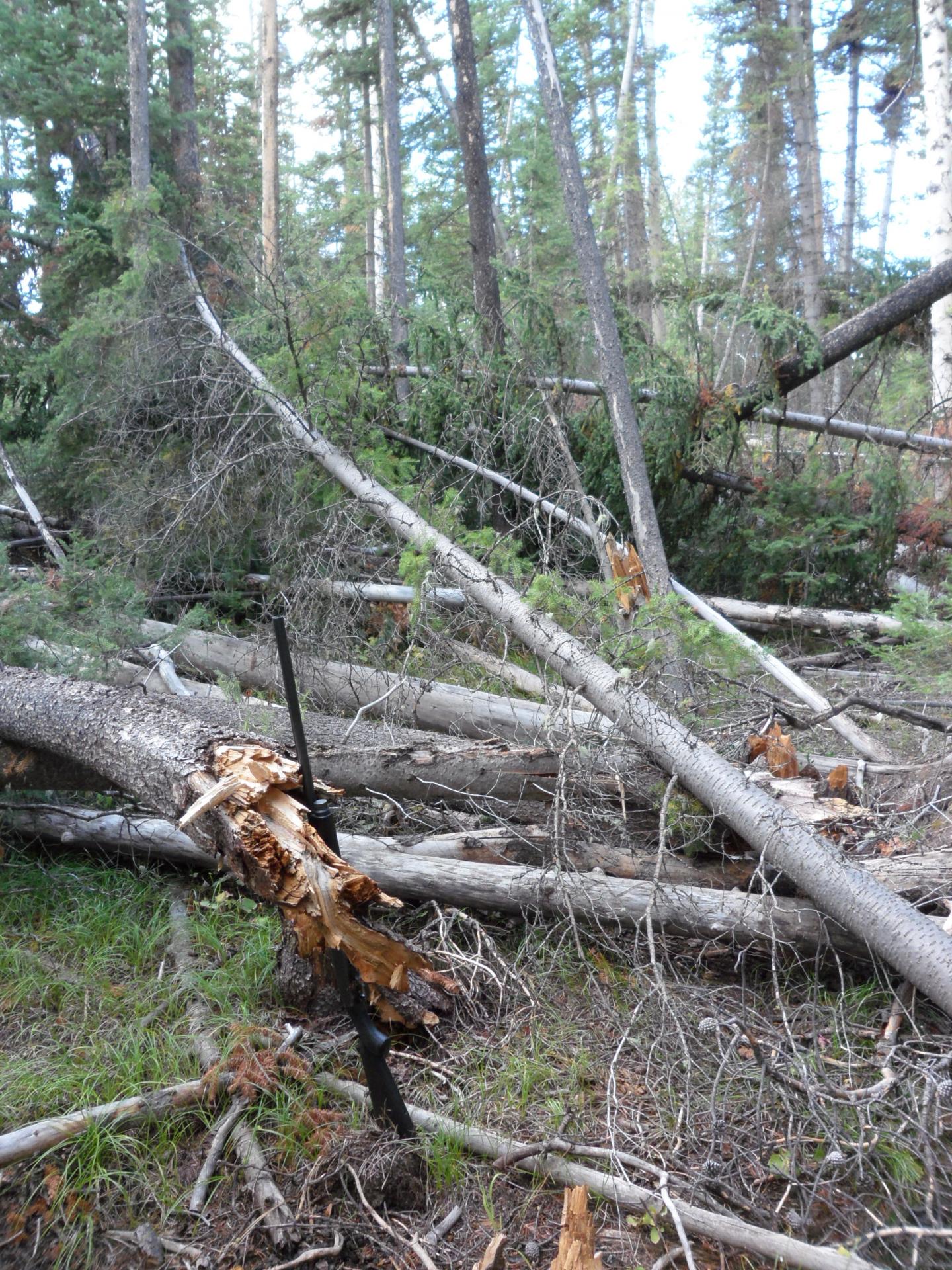
Credit: Wyoming Cooperative Fish and Wildlife Research Unit
Loss of the heat-shielding forest canopy and the obstacle of fallen trees have caused elk to avoid beetle-killed areas of the Medicine Bow-Routt National Forest, according to new research by University of Wyoming scientists.
Those factors more than offset the gains in nutritious grasses and other vegetation desired by elk that have resulted from the region’s bark beetle epidemic, says the research led by recent UW master’s degree graduate Bryan Lamont and supervised by UW Professors Kevin Monteith and Matt Kauffman of the Wyoming Cooperative Fish and Wildlife Research Unit. As with many wildlife studies in Wyoming, this was a collaborative effort between university researchers and biologists with the Wyoming Game and Fish Department, who are charged with managing the elk herd amid the massive forest disturbance.
“Although it is common following forest disturbances for elk to seek out and capitalize on the resulting increases in highly palatable and nutritious forage, during the summer months, elk in our study area fairly consistently avoided beetle-kill,” Lamont says. “This result is somewhat counter to how we typically think elk respond to forest disturbances. It appears there are some subtle but real differences between disturbances such as forest fires and the bark beetle epidemic.”
The research, published in the Journal of Wildlife Management, suggests that removal of standing dead trees and downed logs in the beetle-killed forests of the Sierra Madre Mountains might benefit the area’s population of 6,500-8,500 elk. As it is, the bark beetle epidemic “has altered how elk use the landscape and has resulted in a potential loss of forest habitat that elk use during the day,” the scientists wrote.
The research involved collaring and GPS tracking of 71 female elk between 2012-16 in the Sierra Madres, where thousands of acres of lodgepole pine trees have been killed by bark beetles in the past two decades. The beetle epidemic there peaked around 2009, so the study period took place when trees were just beginning to fall.
The researchers found that, while previous studies showed elk often move into areas disturbed by fires or timber harvest to take advantage of new plant growth, that isn’t happening in the Sierra Madres. In fact, the elk strongly avoid beetle-killed areas in the summer. That’s likely because elk must expend significant amounts of energy to walk over downed logs and cool themselves in the beetle-killed areas.
“Ultimately, this means that if elk are avoiding beetle-killed areas, this translates to much less forest habitat that elk typically would utilize during the summer,” Lamont says.
The findings provide valuable insights for wildlife and land managers across the West, who face challenges from the bark beetle epidemic “that have not been encountered in modern wildlife management,” the paper says.
“Treating beetle-killed areas with excessive standing dead and downed trees through prescribed fire or other removal techniques may be effective at reducing the negative costs to elk from beetle-killed forests; provide elk with the adequate mixture of foraging areas and hiding and thermal cover; and potentially decrease conflicts caused by redistribution,” the scientists concluded.
###
Media Contact
Kevin Monteith
[email protected]
307-766-2322
Original Source
http://www.
Related Journal Article
http://dx.




